Bologna, the capital of Italy’s lush Emilia-Romagna region, is centrally located in the heart of northern Italy. With a highly-connected rail network, you’ll discover a multitude of day trips from Bologna at your fingertips.
This guide highlights the best excursions from Bologna, all of which are just 1 hour or less by train.
Transit note: each of the cities in this guide are within a 1 hour transit from Bologna under normal conditions. However, always check current travel conditions ahead of your trip.
Jump to:
Emilia-Romagna Food Tours
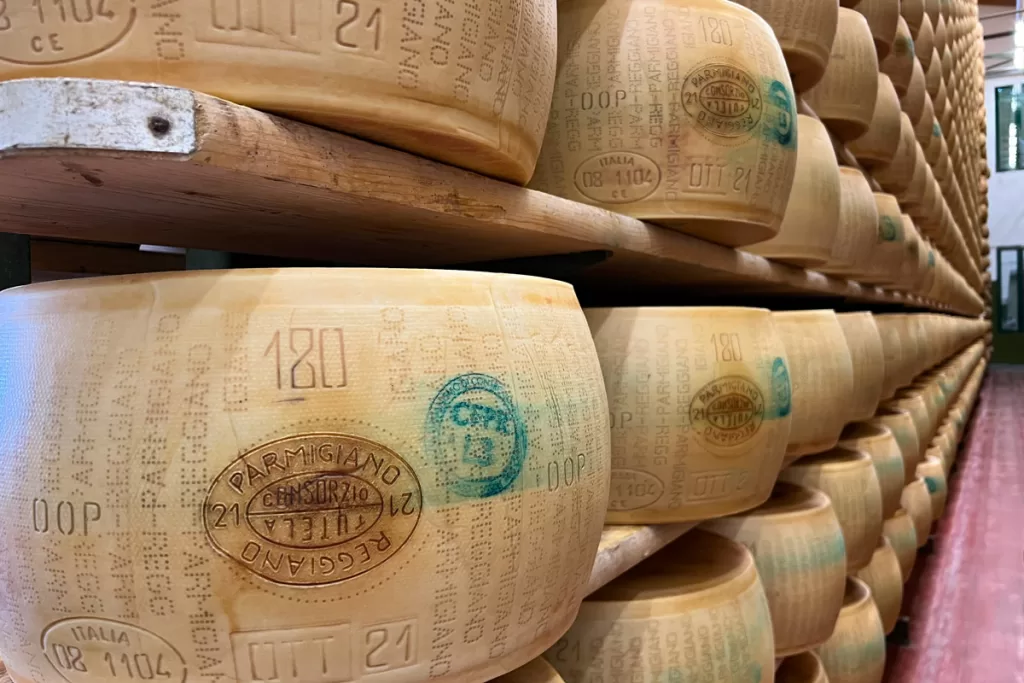
For a day trip that remains close to Bologna, consider taking a food tour into the surrounding countryside. While there are also full-day options, most food tours last around 4 hours. It’s a more languid experience that still gets you outside the city walls.
On a food tour, you’ll get an in-depth look (and taste) at the gastronomy of Emilia-Romagna.
Most tours will visit a dairy farm to observe the production of Parmigiano Reggiano cheese, a traditional acetaia to learn the art of aging balsamic vinegar, a salumeria to sample local prosciutto, and more.
There are enough food tours available to make your eyes cross. To help narrow down your options, try setting your preferences and searching for a corresponding tour on TripAdvisor or Viator. (For what it’s worth, we booked a tour through Andomya Adventures and had a first-rate experience.)
Modena
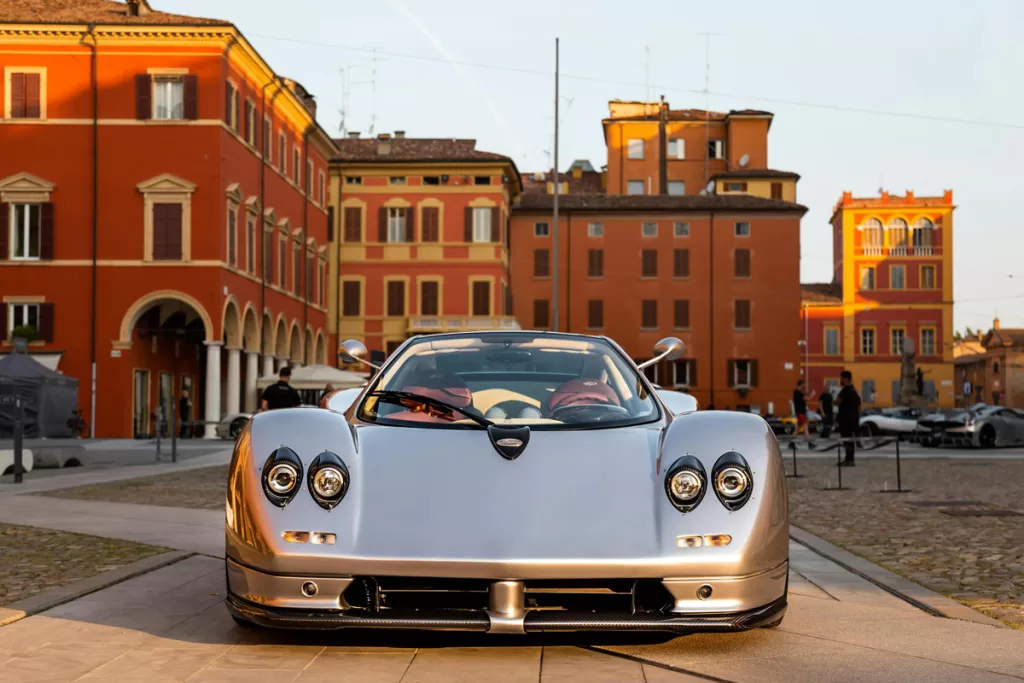
Modena is one of the most popular day trips from Bologna, due to its proximity on the regional train line. The town itself is compact, allowing you to easily see the main sights in 1-2 hours.
However, foodies and car buffs will find plenty to like. Small but mighty Modena is the home of balsamic vinegar, Ferrari, Lamborghini, and Maserati.
Top Sights
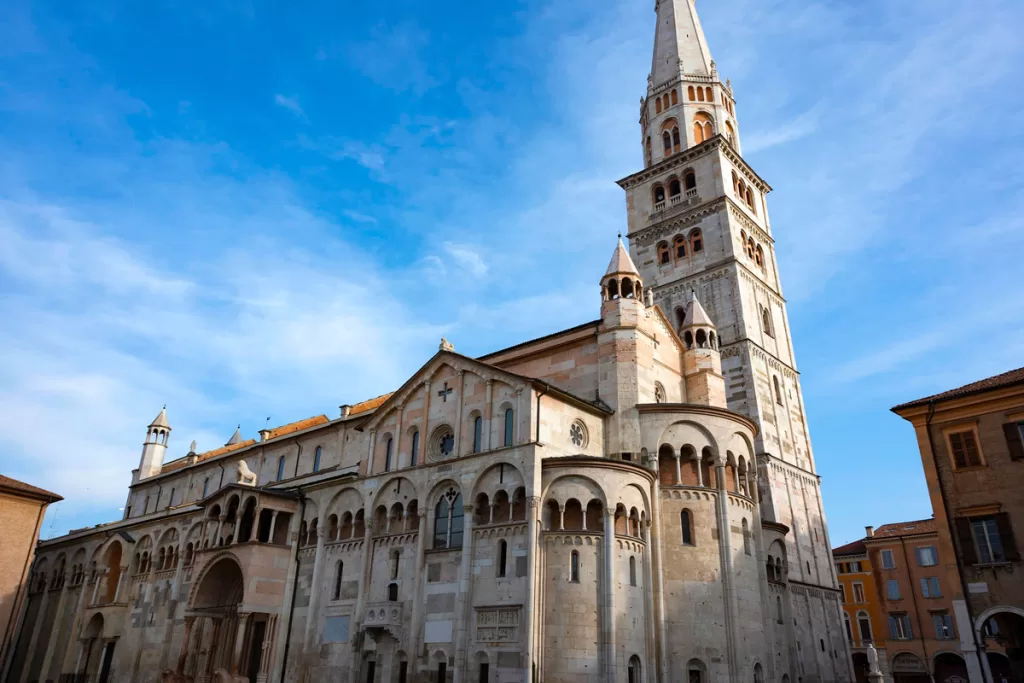
In Modena, one of the most famous landmarks is the Romanesque Cathedral. This UNESCO World Heritage Site has an accompanying bell tower that provides panoramic views of the city rooftops.
The cathedral also borders the main Piazza Grande, a great spot for people-watching. Pick up something to eat at the Mercato Albinelli indoor market, and bring it back to the piazza to nibble as you watch the world go by.
Balsamic Vinegar
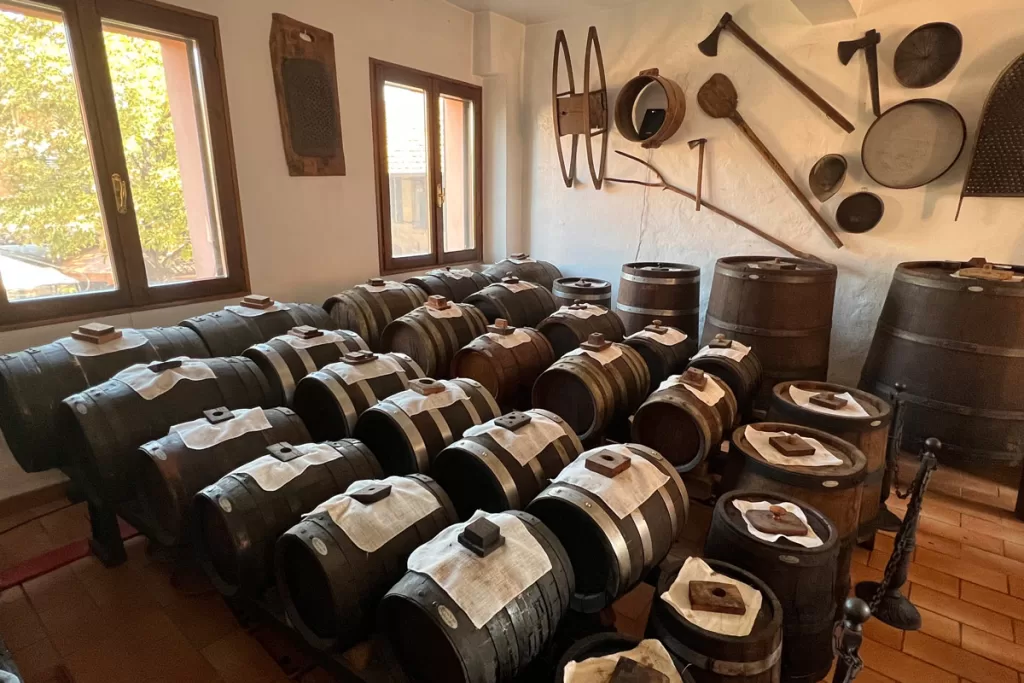
The production and aging of balsamic, or aceto balsamico tradizionale di Modena, requires as much art and skill as winemaking.
Many local producers have carried on the same storied tradition for generations, and welcome visitors to their acetaie for tours and tastings. You’ll learn the full process of producing and aging balsamic, before moving to a tasting room where you can sample the difference between various ages.
You can either sample this prized condiment at an in-town showroom, or venture out to the surrounding countryside for a more comprehensive tour.
In Modena proper, either the family-run Acetaia di Giorgio or trendy Acetaia Malpighi Showroom will provide a quality tasting. Outside of town, some of the top acetaie include Acetaia Cavedoni, Acetaia La Vecchia Dispensa, and the 400-year-old Acetaia Giusti.
Automotive Museums
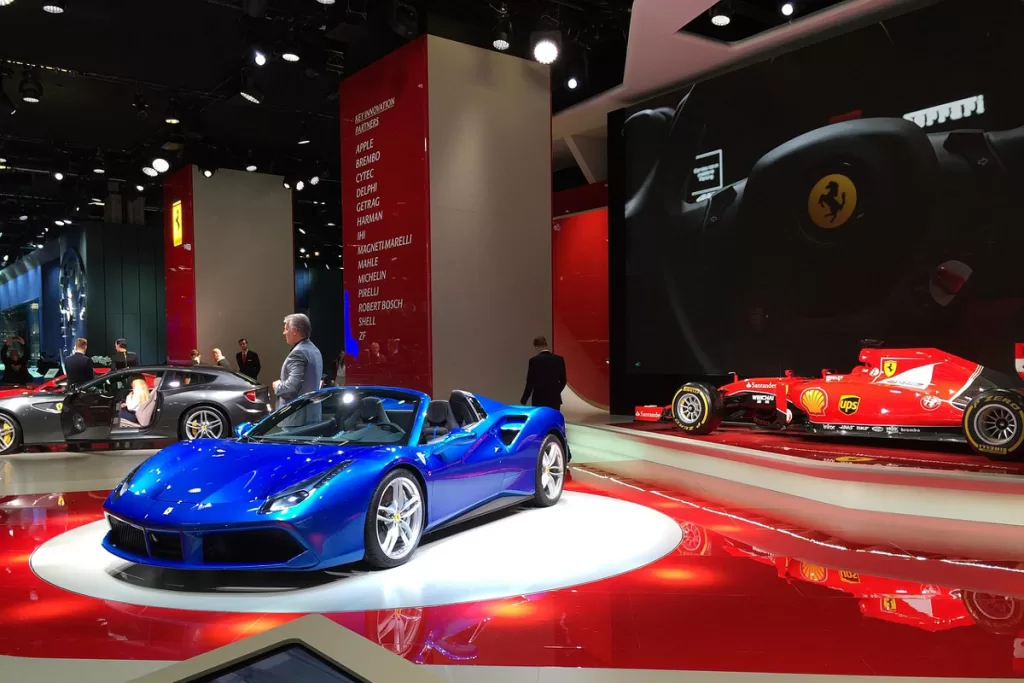
Meanwhile, car enthusiasts will gravitate towards the four different museums devoted to Modena’s luxury automobile brands.
The Museo Enzo Ferrari is located in Modena’s city center, and is a convenient option for those without transportation. Otherwise, if you’re able, you can venture to the Ferrari Museum in Maranello (under 30 minutes away) for more extensive exhibits that include F1 simulators and test driving.
A half hour’s drive in the other direction is the Lamborghini Automobile Museum. You’ll find vast collections of Lamborghini models from inception to present day, along with driving simulators and other interactive exhibits.
Lastly, the Maserati Factory offers an in-depth look into the creation of the prized automobile. The hour-long tour includes a brief history of the brand, before moving on to the production line.
Parma
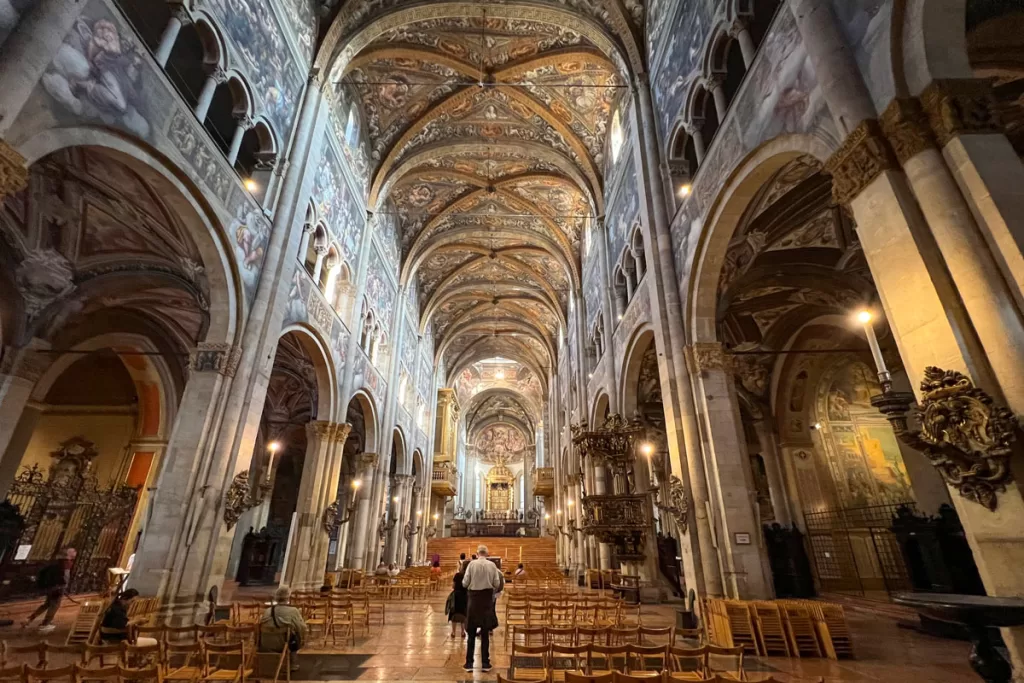
Parma is approximately 30 minutes past Modena on the regional train. It’s easy to see both towns in one day, with a “hop on, hop off” approach.
Similarly to Modena, Parma is very compact, and it’s easy to see the top highlights within a few hours.
Begin at the Duomo, Parma’s dazzling crown jewel. This stunning Romanesque cathedral was built just after 1100 AD, with brightly-painted frescoes covering nearly every inch of the interior.
Next door to the Duomo is its equally-famous Baptistery, constructed in a circular style with pink Verona marble.
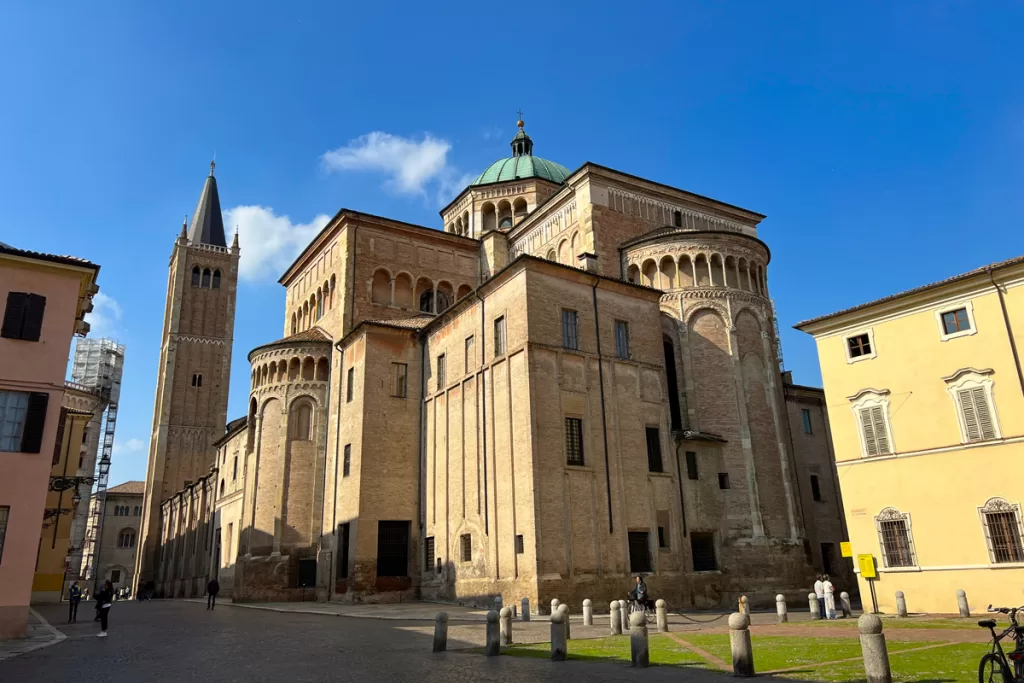
Note: while the Duomo is free to enter, the Baptistery requires tickets purchased in advance.
A short walk from the Duomo brings you to Palazzo della Pilotta, a sprawling complex that takes up an entire city block.
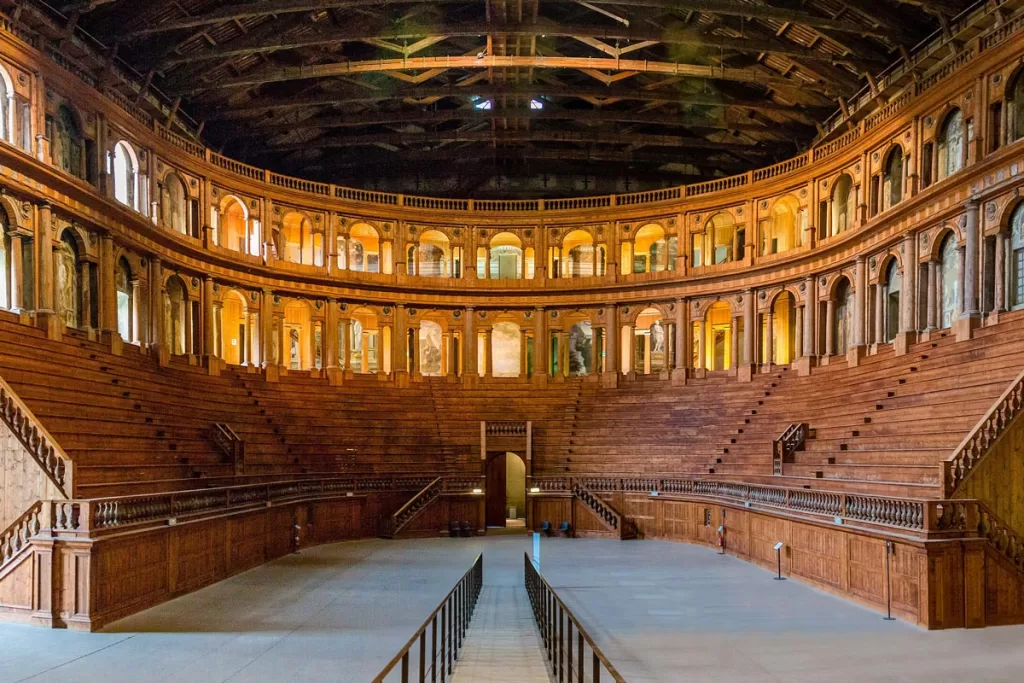
The palace is now most famously home to the Teatro Farnese, one of only three Renaissance theaters still in existence, as well as the Galleria Nazionale. At the National Gallery, you’ll find art by Da Vinci, Correggio, and other masters.
Beyond these grand edifices, much of Parma’s charm lies in simply strolling the quaint city streets and perhaps posting up at a street-side coffee shop or café. You’ll also find plenty of the namesake prosciutto di Parma here, ripe for the tasting.
Rimini
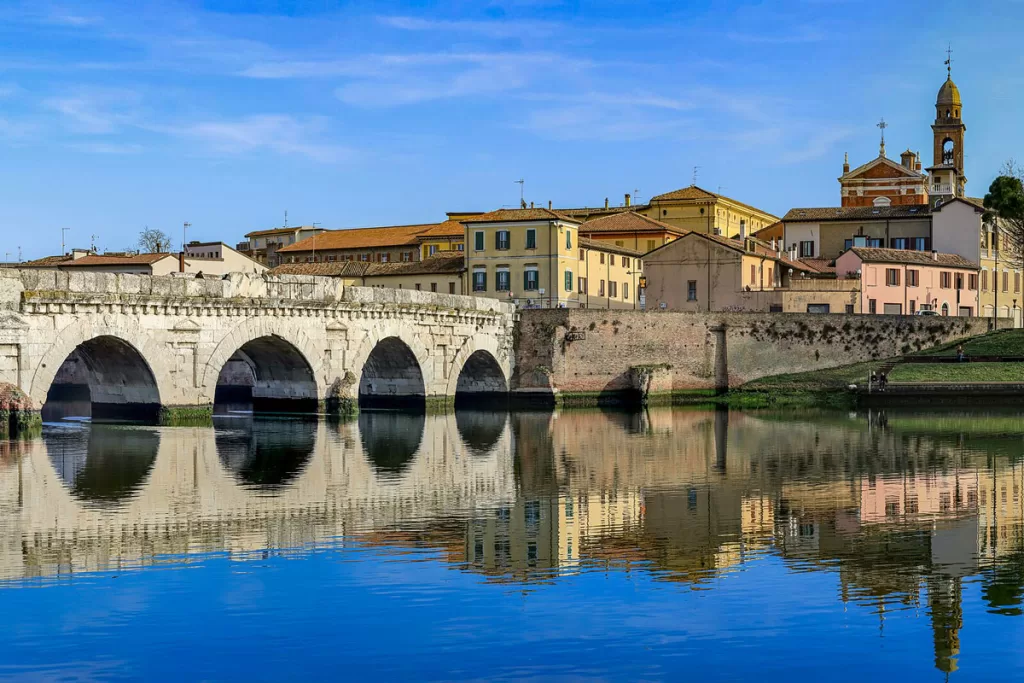
Rimini is a small but bustling little seaside city along Italy’s Adriatic coastline. Much of its claim to fame derives from its Roman heritage, although it also has a lengthy seashore. For those wishing to savor a sun kissed beach day, it’s one of the better day trips from Bologna.
While here, you’ll want to see the Arch of Augustus, Italy’s oldest surviving Roman arch dating back to 27 BC. The Tiberius Bridge, spanning the Marecchia River, is a feat of Roman engineering. Meanwhile, the Domus del Chirurgo Roman surgeon’s house is a fascinating exploration into ancient medicine (complete with surgical instruments).
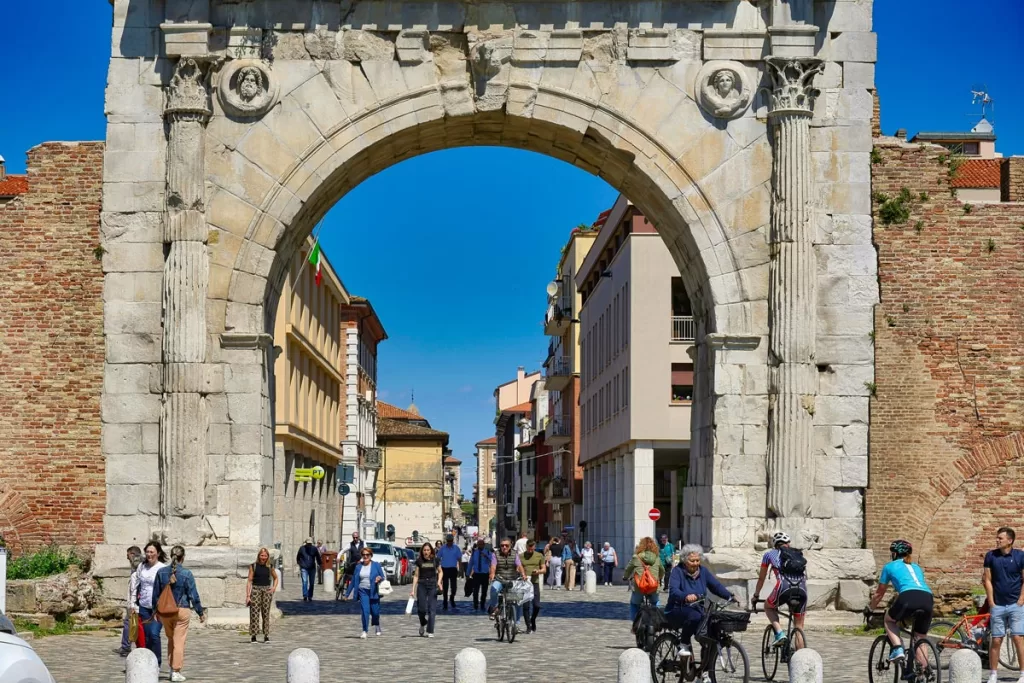
In Piazza Cavour, you’ll find one of Rimini’s most dramatic complexes, the 13th century Palazzo dell’Arengo. Built in the Roman-gothic style, it’s a stunning example of medieval architecture. Today, it houses the Museum of Contemporary Art.
A short walk down Corso d’Augusto is Malatesta Temple, a Renaissance cathedral unlike most others from the era. A squat, rather unadorned edifice, it may appear “plain” when compared to the Renaissance’s more ornate churches. However, there’s a clean beauty in its simplistic interior.
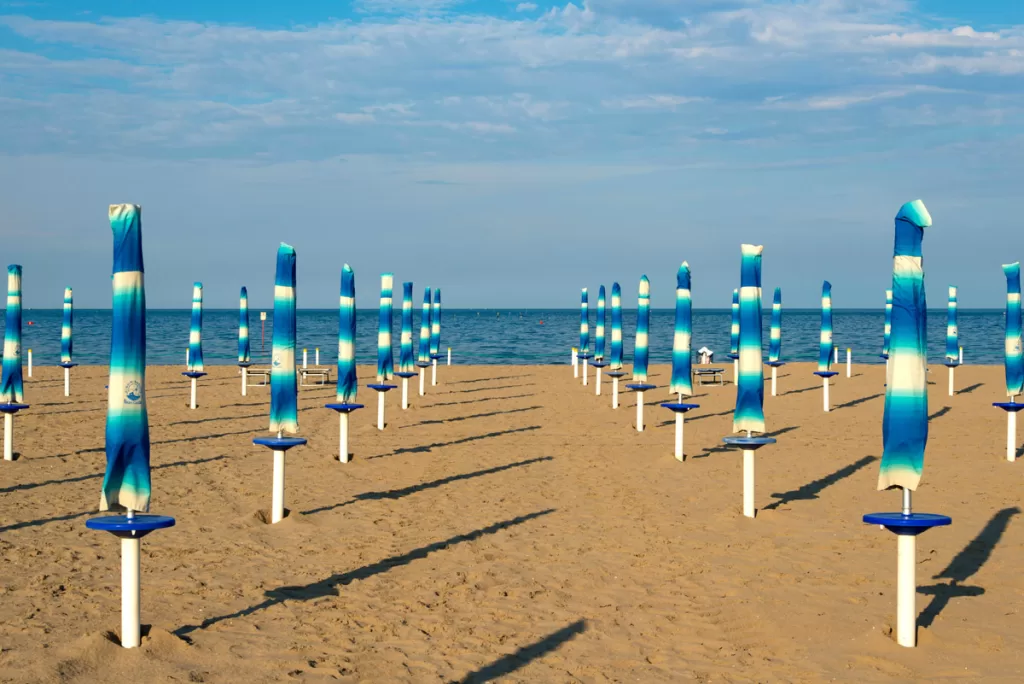
For more recent history, head to the Fellini Museum, an homage to native son and pride of Rimini Federico Fellini. The museum is a testament to both the filmmaker’s life and the golden age of Italian cinema.
Perched along the Adriatic Sea, Rimini also boasts expansive beaches and the 16 km-long Parco del Mare promenade.
Ravenna
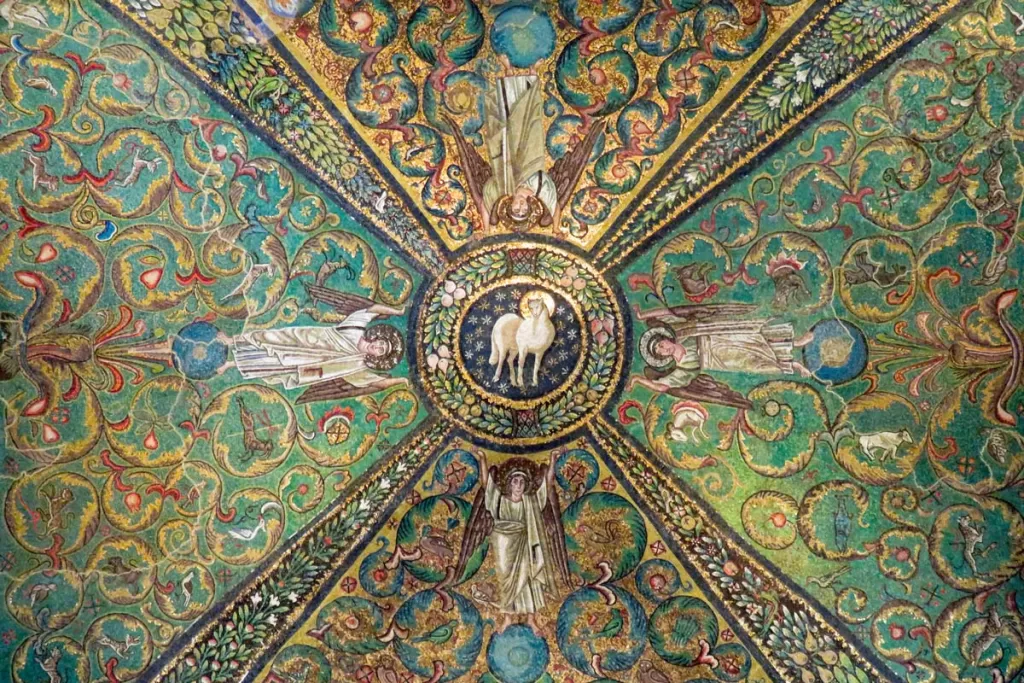
Ravenna is most well-known for its mosaics: glittering Byzantine masterpieces that adorn multiple churches and religious buildings around town.
The most famous mosaics in Ravenna decorate the 6th century Basilica di San Vitale. The interior is awash with color, with elaborate designs covering nearly every square inch of the interior. You’ll find elaborate depictions of both religious allegories and the secular, including the Emperor Justinian and Empress Theodora.
Along the backside of the basilica is the Mausoleum of Galla Placidia. It’s recognized as a UNESCO World Heritage Site for some of the oldest mosaics in Ravenna.

For further mosaic admiration, head to the Battistero Neoniano, an ancient baptistery with an intricate collage of John the Baptist. And if you aren’t mosaiced out yet, the twin Basilica Sant’Apollinare Nuovo (in town and walkable) and Basilica Sant’Apollinare in Classe (a 10-minute drive outside of Ravenna) are equally beautiful.
Beyond Ravenna’s mosaic heritage, other noteworthy points of interest include Dante Alighieri’s tomb and the Palazzo Guiccioli, a former residence of Lord Byron and now a museum dedicated to its famous resident.
You’ll also want to explore Piazza del Popolo, the city’s main square that drips with heavy Venetian influence from the days when Ravenna was under Venice rule.
Ferrara
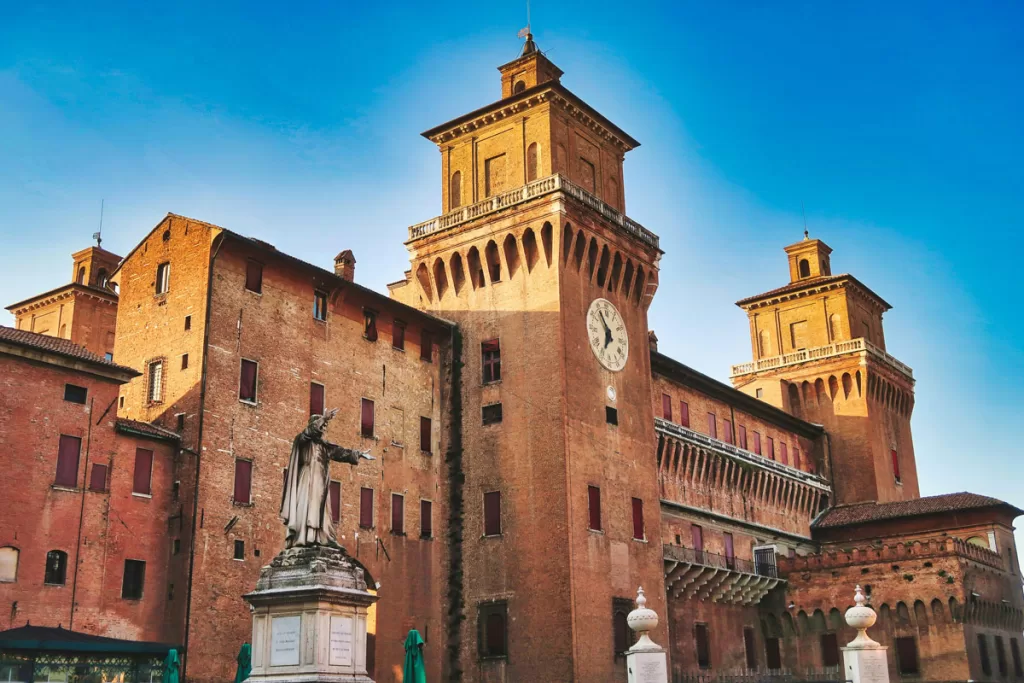
Once the home of Lucrezia Borgia, evidence of former Renaissance riches are everywhere in Ferrara. The entire town is even designated a UNESCO World Heritage Site.
The most spellbinding landmark in Ferrara is Castello Estense, which sits at the literal and figurative heart of the city. This 14th century castle is the stuff of storybooks, with a moat, drawbridges, dungeons, and glittering halls. You can also climb its towers for sweeping views of the surrounding countryside.
One block away is Ferrara’s cathedral, the Cattedrale di San Giorgio. As one would expect from such a prosperous Renaissance city, the interior of the Gothic-Romanesque structure is dripping with ornate frescoes and gilded arches.
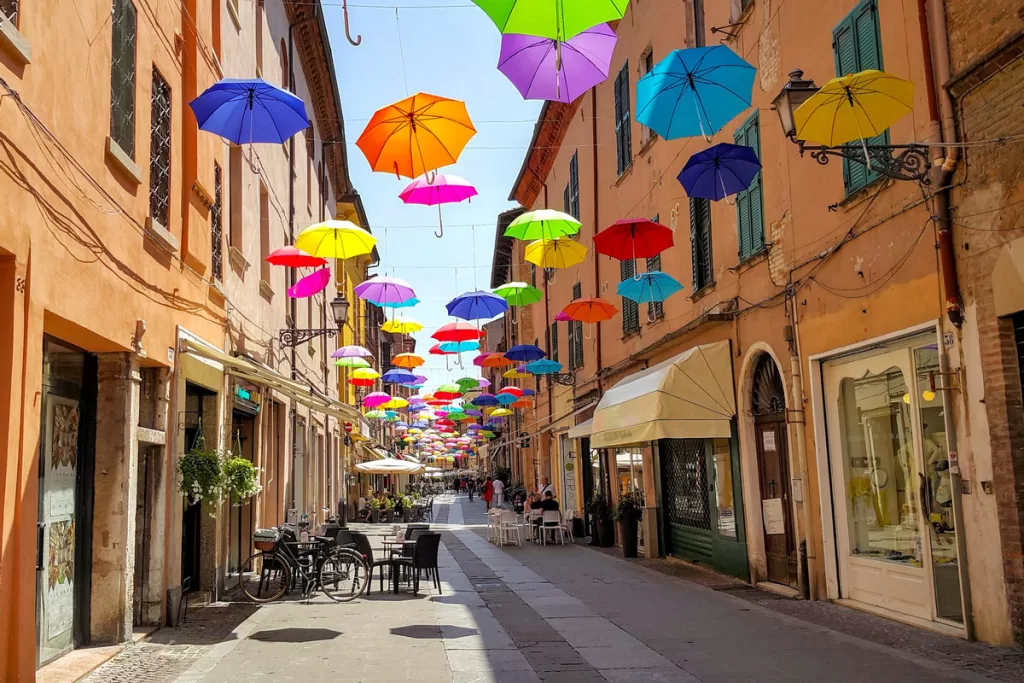
You’ll find further riches at the Palazzo dei Diamanti (a Renaissance palace turned art museum) and Palazzo Schifanoia, 14th century home of the Este family that retains stunning frescoes.
For a taste of everyday medieval life, head to Via delle Volte, a cobblestoned medieval street with ancient brick archways.
Note: Ferrara is also a uniquely bike-friendly city, with flat streets that invite you to explore on two wheels. You’ll find multiple bike shops around town, with reasonable rental rates by the hour or day.
Milan
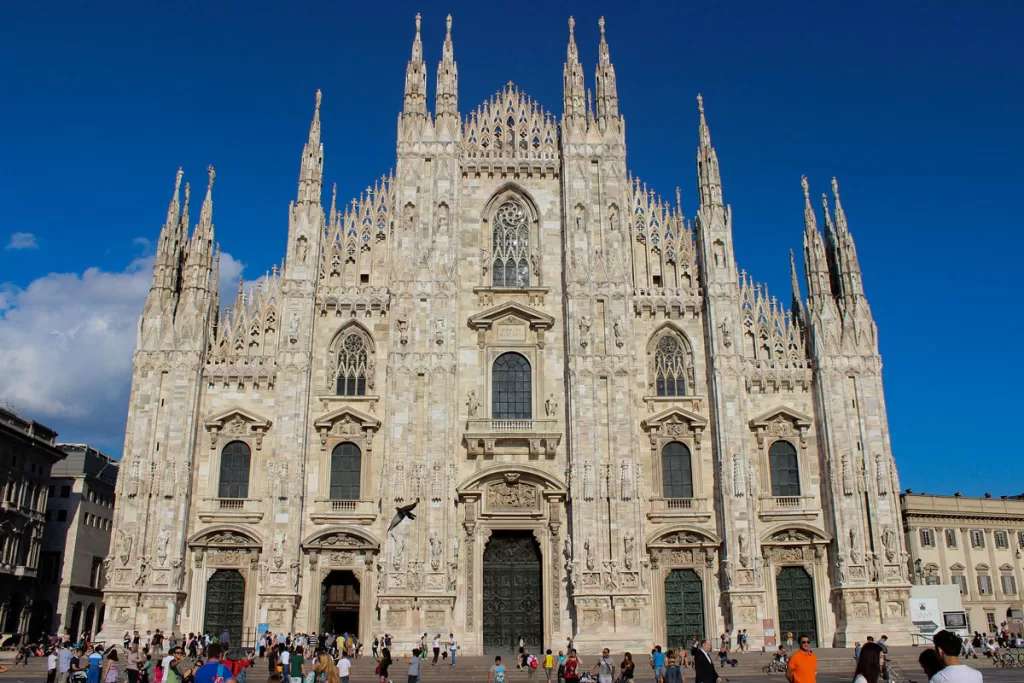
Milan, as both the financial center of Italy and one of the premier fashion capitals of the world, has enough sightseeing to be a trip itself. However, it is possible to see its top highlights on a whirlwind day trip from Bologna.
Start at the iconic Duomo di Milano, one of Italy’s most famous cathedrals. Its intricately detailed façade is a mesmerizing study in Gothic architecture, while climbing to its rooftop terrace affords panoramic views of the city below. (We strongly recommend purchasing tickets in advance, which you can do here.)
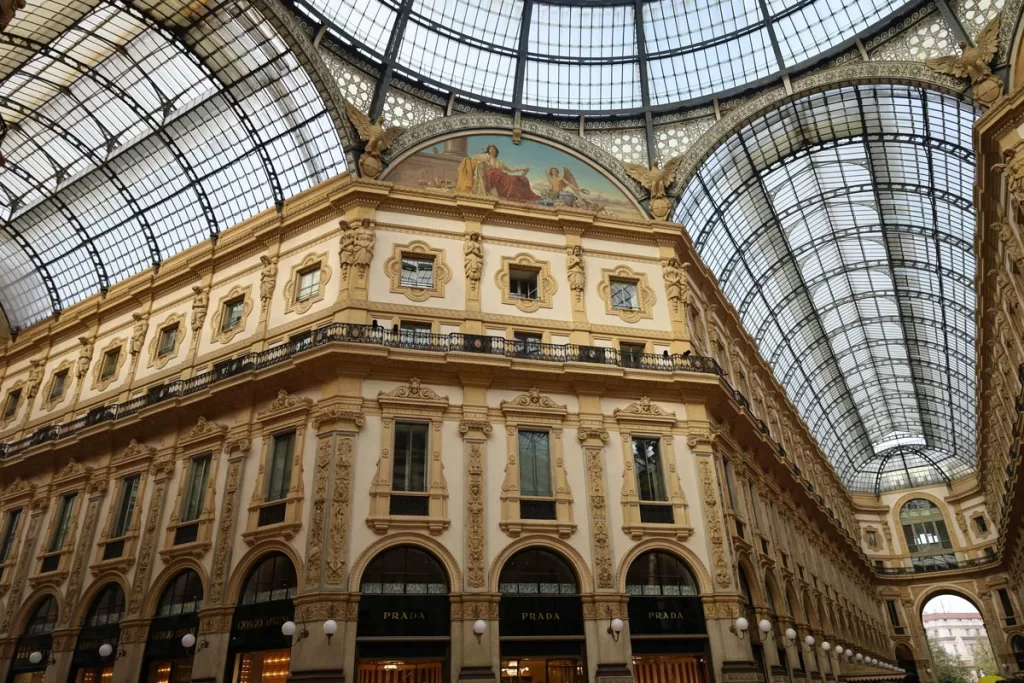
Across the piazza from the Duomo is the Galleria Vittorio Emanuele II, an exquisite 19th century shopping arcade that is home to top luxury fashion brands like Prada and Gucci.
A 1 km walk down Via Dante will bring you to Castello Sforzesco, the city’s formidable medieval castle. The sprawling complex now boasts multiple museums and art galleries, including works by da Vinci and Michelangelo.
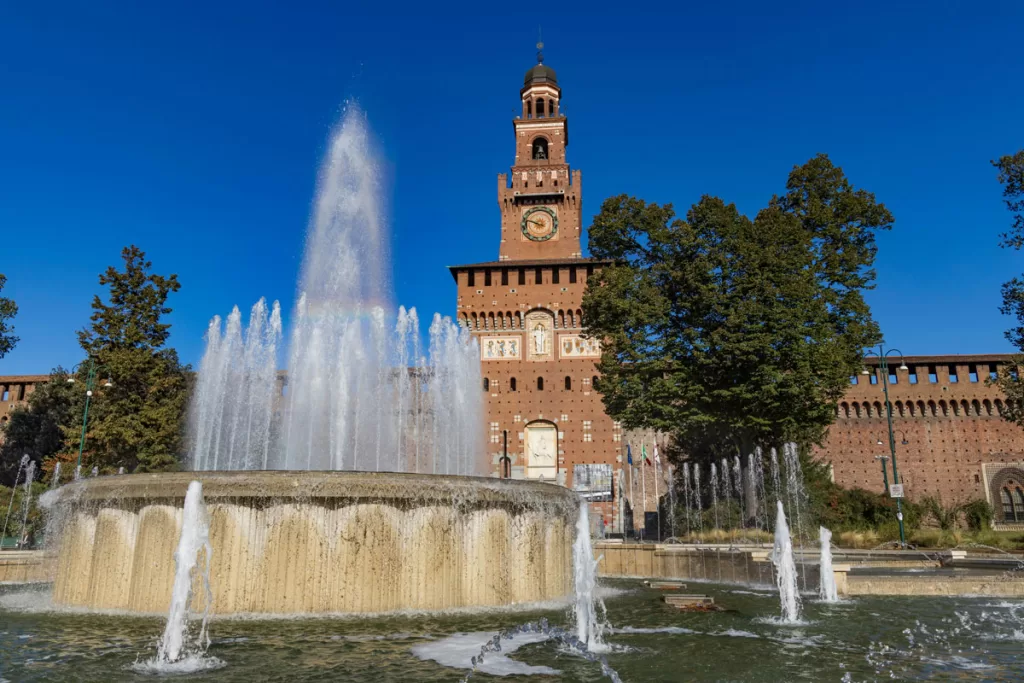
However, to marvel at da Vinci’s most famous work, you’ll want to continue on to humble Santa Maria delle Grazie, the understated home of da Vinci’s masterful “The Last Supper” fresco.
Note: “Last Supper” tickets on the official website go on sale months in advance. If you missed the official ticket release date, you can still get tickets through resellers like Viator. Just prepare to pay a premium.
Florence
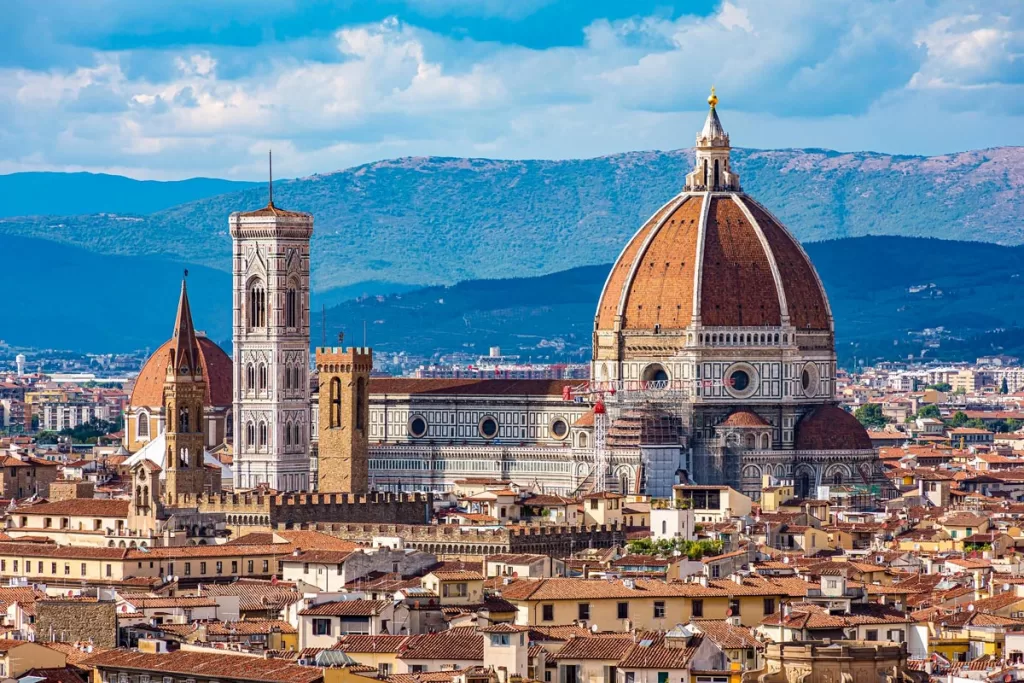
It feels like a bit of a disservice, to diminish a city as vibrant as Florence to a mere day trip. However, if this is your only opportunity to visit the pearl of the Italian Renaissance, it is feasible to reach Florence in 1 hour 15 minutes on the highspeed rail.
Begin your time at the Piazza del Duomo, the bustling square fronting the Cathedral of Santa Maria del Fiore. The pastel-hued church with red-tiled dome is one of the defining icons of Florence, and an essential stop on your tour.
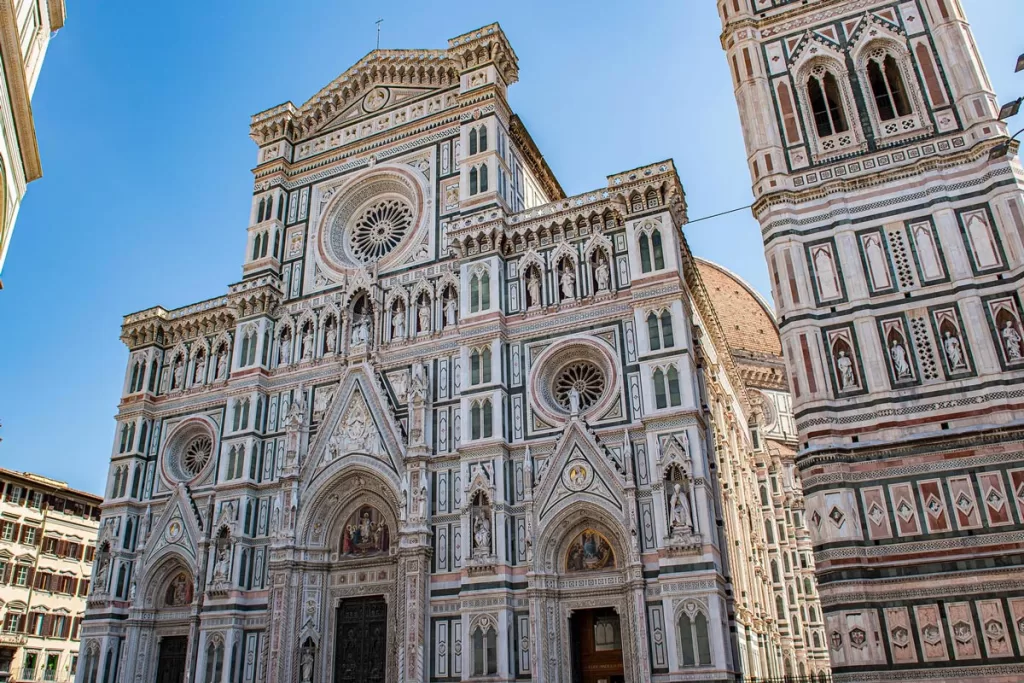
Optional add-ons to Santa Maria del Fiore include the accompanying Baptistery of St. John and Campanile di Giotto bell tower, which you can climb for panoramic views. Most visitors with more days in Florence choose to visit the Baptistery and Campanile, but with only a day trip, you can decide if you’d like to devote precious time to them or not.
From the Duomo, continue on to Piazza della Signoria, Florence’s other famous square that houses Palazzo Vecchio, residence of the ruling Medici family.
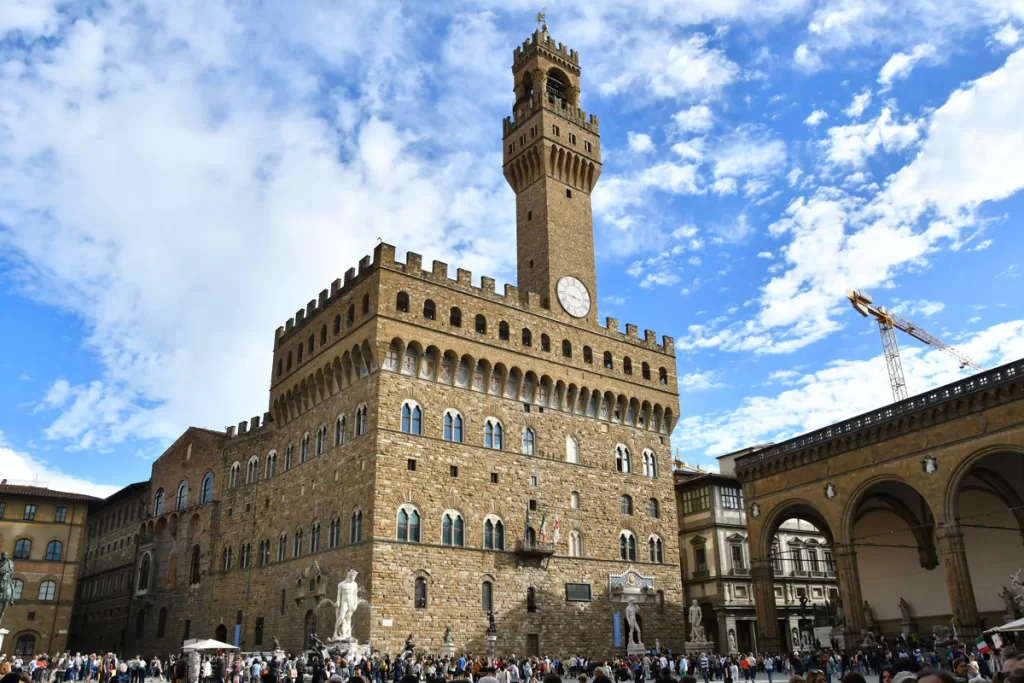
After Piazza della Signoria, continue one block towards the river to the Uffizi Gallery, one of Florence’s top two museums and home to Botticelli’s “Birth of Venus,” along with masterpieces by Michelangelo, Da Vinci, and others.
While by the Uffizi, you’ll also want to snap a photo of the Ponte Vecchio, the 700-year-old bridge spanning the Arno river and an iconic image of Florence.
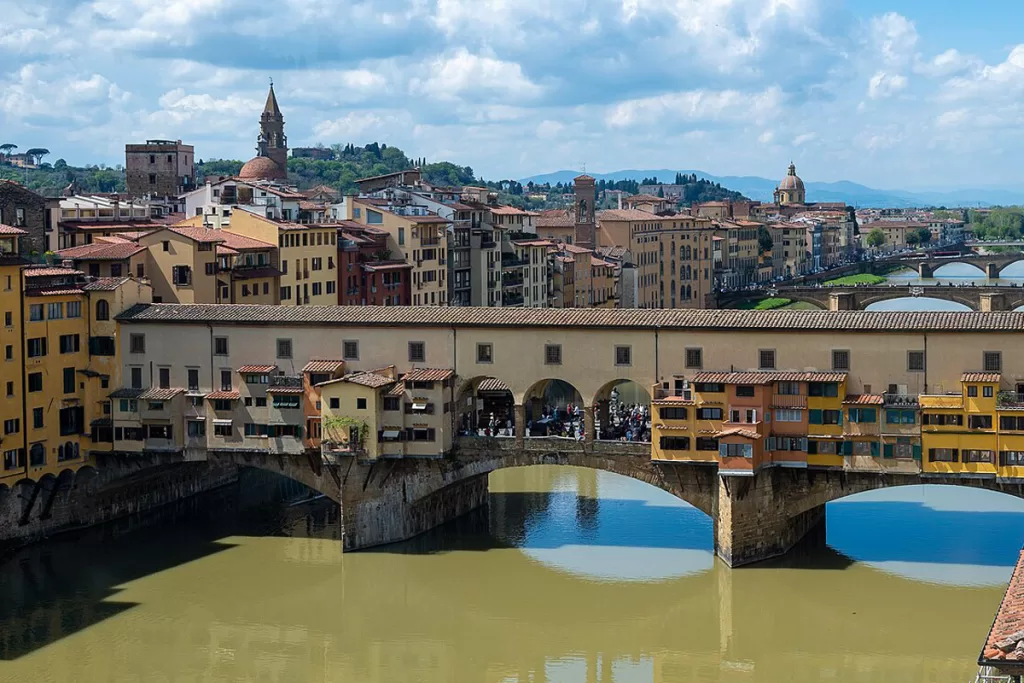
Note: the Uffizi and the Accademia Gallery are the twin pillars of Florentine art museums. If possible, you should make every effort to visit both.
The Accademia houses Michelangelo’s “David” sculpture, a masterpiece that no photos can do justice to seeing in person. However, the Uffizi is larger and slightly more centrally located. If you must choose between the two, the Uffizi may be your best bet.
Regardless of which (or both) museums you visit, we strongly recommend purchasing tickets ahead of time. Otherwise, wait times can easily take 1-2 hours and eat up valuable time. Get tickets online at either the Uffizi or Accademia websites.
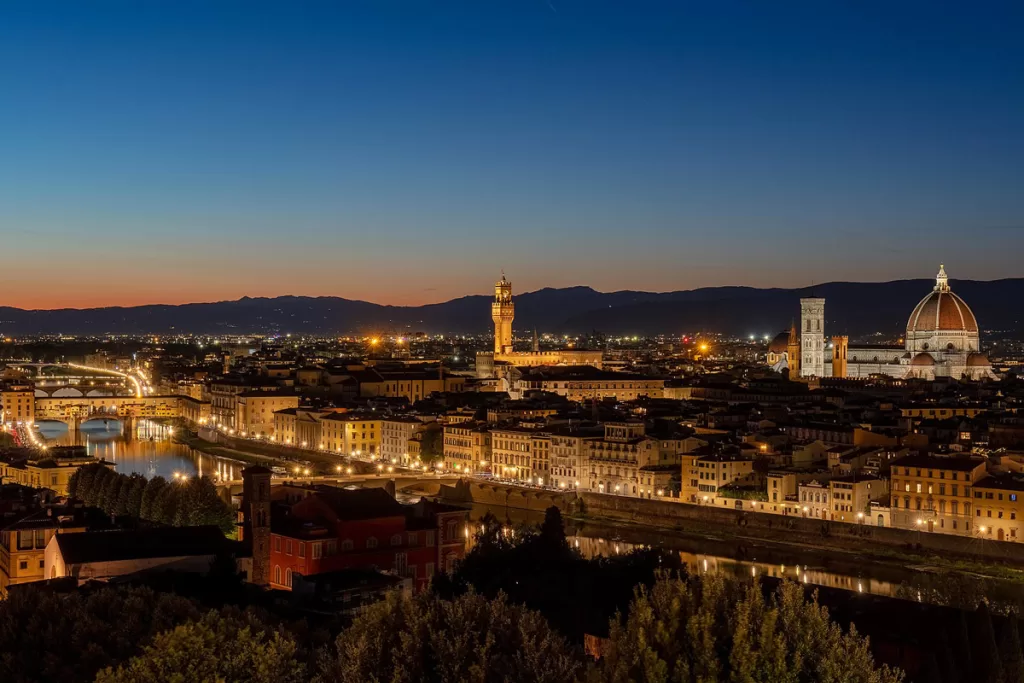
In the evening, cross the river to Piazzale Michelangelo, perched on a rise above the Arno. This is the iconic Florence photo spot, with sweeping views of the city’s terracotta roofs dominated by the dome of Santa Maria del Fiore, and the hills of Tuscany in the distance.
Photos here are best taken in the soft light of evening, with the setting sun adding a glow to the scene. The piazza also comes alive in the later hours, after the heat of the day has passed. It makes for a fitting end to your day trip to Florence.
Verona
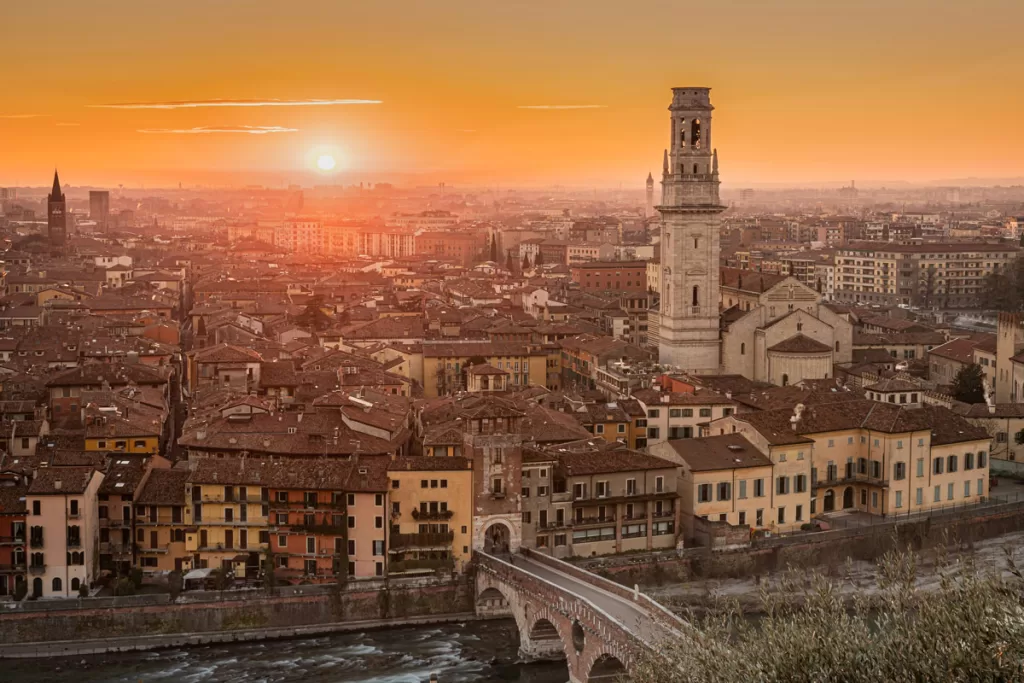
Verona is a town for history buffs and romantics. The two coexist side by side, attracting most tourists either for its expansive and well-preserved Roman ruins, or for the setting of Shakespeare’s classic “Romeo and Juliet.”
Verona was an important hub during the Roman Empire, and evidence of its former glory remains throughout the old town. The ancient Arena, an amphitheater older than the Colosseum, is so well-preserved that it still hosts concerts, operas, and more to this day.
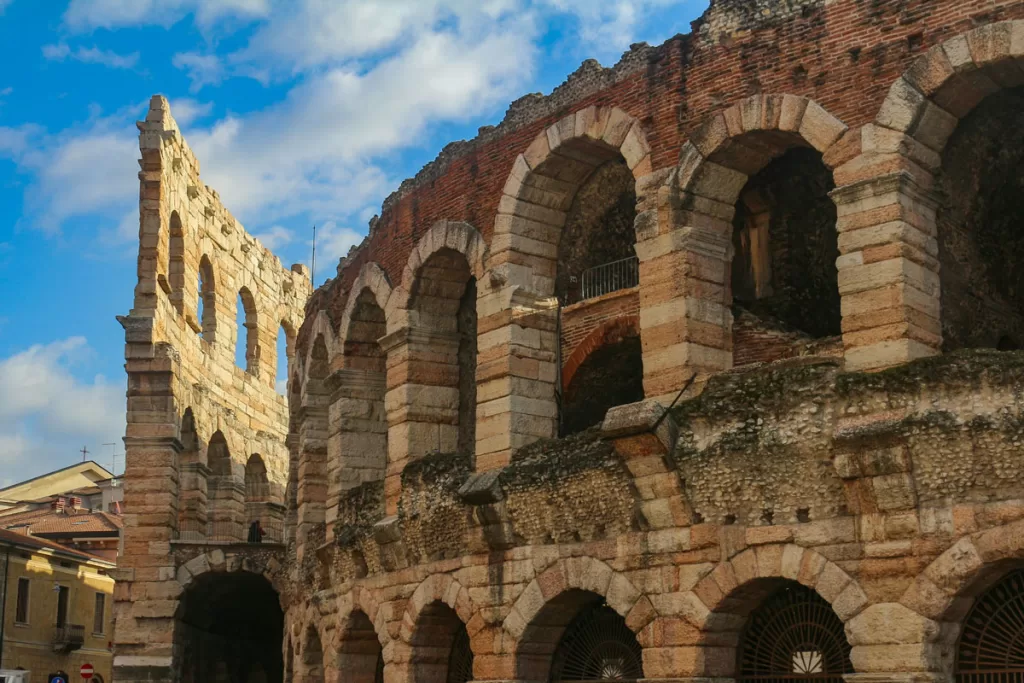
Further explorations of ancient Rome are found in the Ponte Pietra Roman bridge, Porta Borsari and Porta Leoni gates to the ancient city, and the Scavi Scaligeri ruins, hidden underground beneath Verona’s modern buildings.
In Shakespeare’s “fair Verona,” fans flock to Juliet’s house to soak up their proximity to the star-crossed lovers. It’s an authentic medieval palazzo, although the details become vague once the relationship to Shakespeare is questioned.
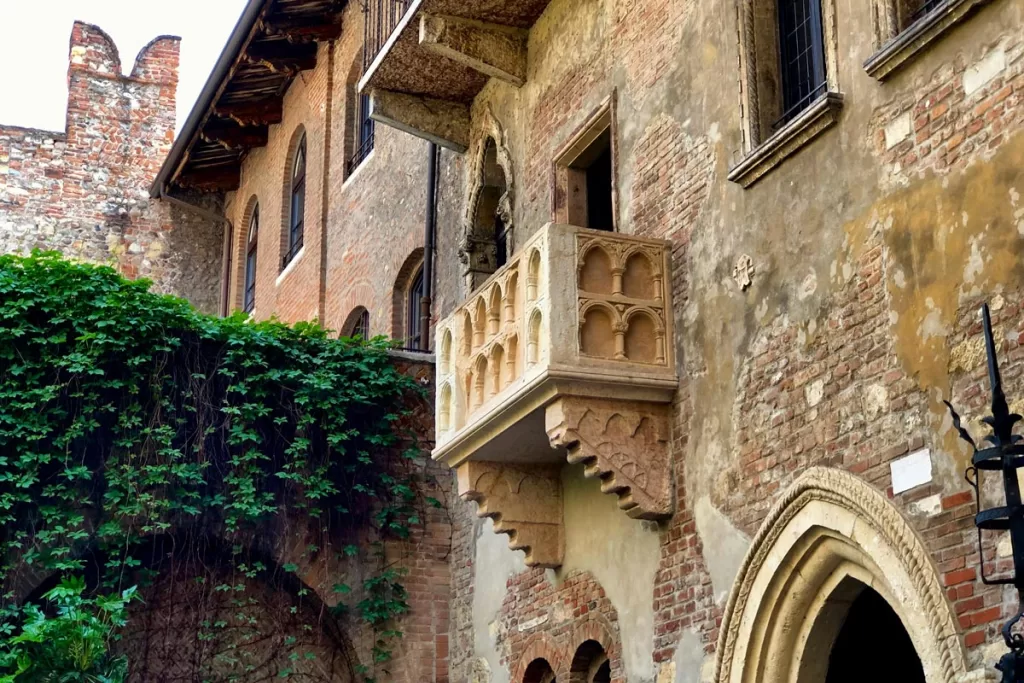
(Juliet’s house was only designated as “probably” the home of the Capulets in the 1930s, most certainly by some confident marketers. However, it has become such a beloved destination for Shakespeareans and romantics, that even a cynic can’t help but get caught up in the allure of the storytelling).
At Casa di Giulietta, you can stand on Juliet’s legendary balcony, write a love note to leave on Juliet’s Wall, and rub the right breast of Juliet’s statue for a stroke of good romantic luck.
If you need a break from the romance, a few other top highlights include Basilica di San Zeno Maggiore (a stunning example of Romanesque architecture) and Piazza delle Erbe (a great spot to grab a bite to eat, with both market stalls and cafés).
Looking for more Bologna inspiration? Check out our guide on the top things to do in Bologna, organized by number of days you have to spend in the region.
